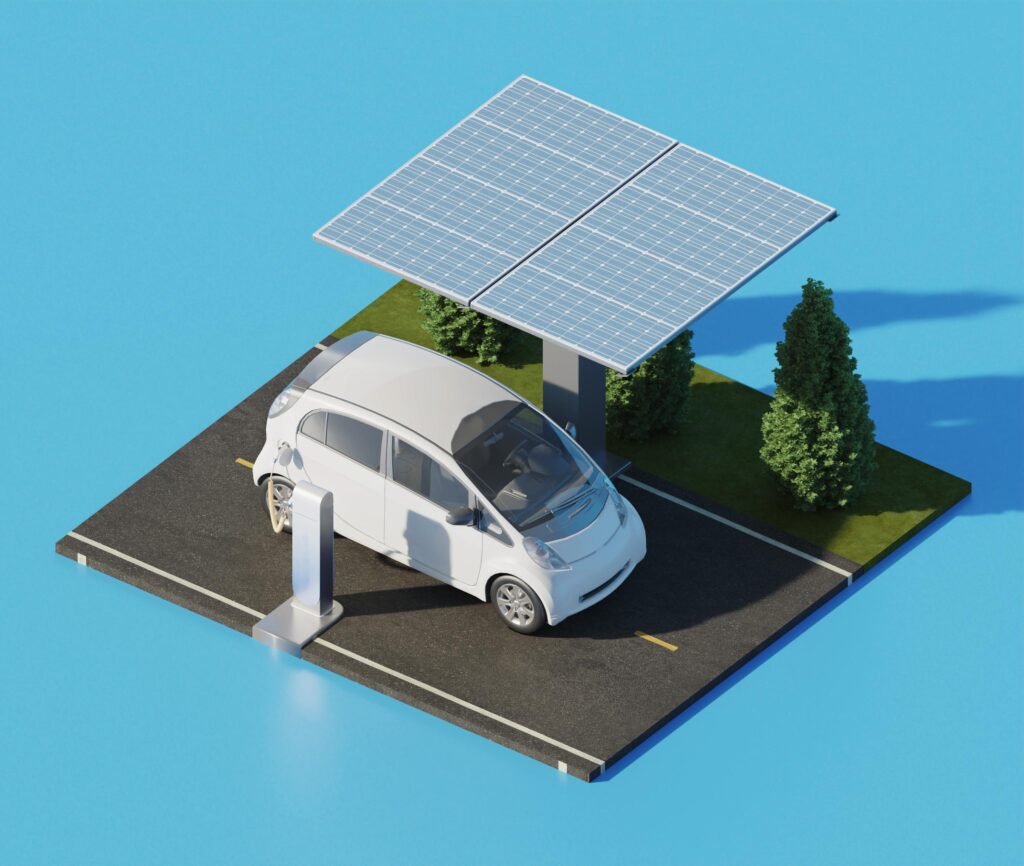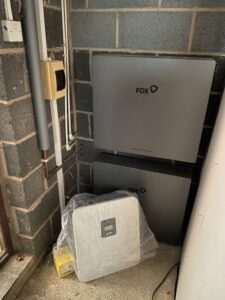Harnessing the sun to fuel your commute might sound futuristic, but it’s already a reality for households across the UK. Solar EV charging connects your rooftop panels to your car’s battery, allowing you to drive on clean, renewable energy. This guide explains how the technology works, what you need to set it up, and the key benefits and considerations so you can decide if it’s right for you.
Table of Contents
- How Solar EV Charging Works
- What Equipment Do You Need?
- Benefits of Solar EV Charging
- Considerations and Challenges
- Optimising Your System
- Incentives and Grants
- Steps to Get Started
- Final Thoughts
How Solar EV Charging Works
Photovoltaic (PV) panels convert sunlight into direct‑current (DC) electricity, which flows through an inverter and becomes alternating‑current (AC) power for your home and charger. Any surplus can be used to power appliances, stored in a home battery or exported to the grid for a small payment. A typical UK array generates around 3 – 4 kW at peak, producing roughly 3,000 – 3,400 kWh per year. Output varies with season, so you may still need to top up from the grid in winter. That’s enough to keep your car charged weekly too.
What Equipment Do You Need?

Solar panels are the heart of the system. Most homes use eight to twelve panels, enough to support regular EV charging. You’ll also need an inverter to convert DC to AC power, a solar‑compatible EV charger that can divert excess generation to your vehicle, and optionally battery storage to keep daytime solar energy for nighttime charging. A smart meter or app helps you track consumption and export. Flux Solar Energy will design and install a tailored system for your roof and driving habits; learn more in our Solar Installation Process guide.
Benefits of Solar EV Charging
- Cleaner transport: Driving an EV already cuts tailpipe emissions. Powering it with solar goes further by using 100 % renewable electricity. EVs produce zero tailpipe emissions and are cheaper to run than petrol or diesel vehicles.
- Lower running costs: Once your panels and charger are installed, sunshine is free. A 4 kW system can save households over £400 per year, and charging an EV with solar is cheaper than petrol or even grid electricity.
- Reliability & convenience: Solar panels have no moving parts and last 25 years or more. With a home charger, your car recharges while you work or sleep—no queuing at public chargepoints.
Considerations and Challenges
Before diving in, consider a few practical points:
- Upfront cost and roof space: Solar panels and batteries require investment and enough unshaded roof facing south, east or west. Shade optimisers can help if trees or buildings cast shadows.
- Seasonal variation: Output drops in winter, so you might supplement with grid power or make use of smart tariffs for low‑cost charging when the sun isn’t shining.
- Charger compatibility: Some chargers need a minimum 1.4 kW generation before diverting power to the car. If the output is lower, they draw from the grid.
Optimising Your System
To get the most from your installation:
- Match system size to your needs: Our team will help you choose a 3–5 kWp array based on your household electricity use and driving patterns. If you travel long distances, you may opt for more capacity.
- Add a battery: Storing surplus energy lets you charge after sunset and participate in smart tariffs. It also provides backup during outages.
- Use smart tariffs & monitoring: Time‑of‑use tariffs let you export and import at favourable rates. Monitoring apps show when to charge for maximum savings.
Incentives and Grants
Several schemes can offset costs. The Smart Export Guarantee (SEG) pays for surplus electricity exported back to the grid. The EV Chargepoint Grant offers up to £350 toward a home charger, and reduced VAT on solar panels and batteries lowers installation costs. Local councils may also provide grants, so check with your authority. For planning considerations, read our post Do I Need Planning Permission for Solar Panels in the UK?.
Steps to Get Started
Ready to explore solar EV charging? Assess your household energy use and driving patterns, then book a survey with Flux Solar Energy to design a system tailored to your roof and budget. Consider adding battery storage to increase self‑consumption and apply for any available grants. Once installed, monitor your system with a smart meter or app to make the most of your solar power.
FAQs About Solar EV Charging
How many panels do I need? Most homes need around eight to twelve panels to support regular EV charging. The exact number depends on your roof size, orientation and how far you drive each week. A system rated around 3 – 4 kW can produce 3,000 – 3,400 kWh per year, enough to recharge a typical EV battery over a few sunny days.
Do I need a battery? It’s optional. Without one, you charge during daylight only; adding a battery lets you store surplus solar energy for evening or overnight charging and provides backup during outages.
Can I go off‑grid? Not entirely. Seasonal variations mean output drops in winter, so most homes stay connected to the grid. A battery and smart tariffs can help you maximise self‑consumption but don’t eliminate reliance completely.
Will my charger work with solar? Many home chargers are compatible with PV systems. Some require a minimum of 1.4 kW of solar generation before they divert power to the car. Your installer can recommend a charger that automatically prioritises solar energy and switches to grid power only when needed.
Final Thoughts
Combining an electric vehicle with solar panels lets you power your journeys with clean, renewable energy while reducing costs and emissions. A modest system can produce 3,000 – 3,400 kWh per year and fully charge a typical EV battery after about 10 hours of sunshine. By investing in solar, you’ll enjoy reliable energy for decades, drive without tailpipe emissions and help build a greener future.
If you’re ready to cut your carbon footprint and fuel costs, contact Flux Solar Energy for a free, no‑obligation quote. Our experts will design a customised solar and EV charging solution that fits your home and lifestyle. Join the growing community powering their cars with sunshine and embrace a cleaner way to travel.




